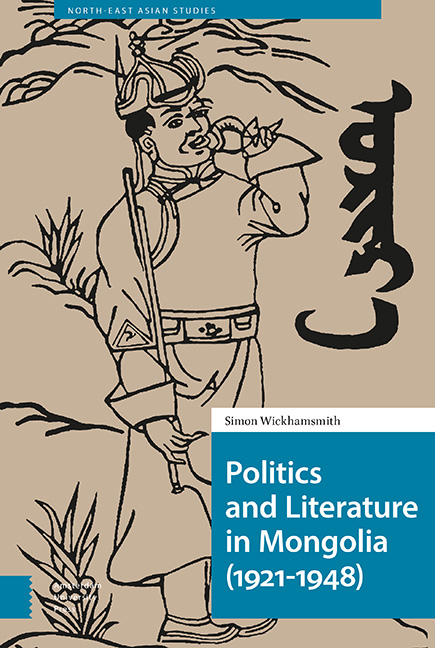Book contents
- Frontmatter
- Dedication
- Contents
- Transliteration and Mongolian Names
- Introduction
- 1 Prefiguring 1921
- 2 Staging a Revolution
- 3 Landscape Re-Envisioned
- 4 Leftward Together
- 5 Society in Flux
- 6 Negotiating Faith
- 7 Life and its Value
- 8 The Great Opportunistic Repression
- 9 A Closer Union
- Appendix: Brief Biographies of Writers
- Index
3 - Landscape Re-Envisioned
Published online by Cambridge University Press: 21 November 2020
- Frontmatter
- Dedication
- Contents
- Transliteration and Mongolian Names
- Introduction
- 1 Prefiguring 1921
- 2 Staging a Revolution
- 3 Landscape Re-Envisioned
- 4 Leftward Together
- 5 Society in Flux
- 6 Negotiating Faith
- 7 Life and its Value
- 8 The Great Opportunistic Repression
- 9 A Closer Union
- Appendix: Brief Biographies of Writers
- Index
Summary
Abstract
One of the more complex developments in the post-revolutionary period was in the Mongolian people's understanding of their traditional, intimate relationship with the landscape. Mongolian nomadic life has always been linked inextricably with the cycle of the seasons, with the weather, and with the topographical features, which function as both waymarks and as ancestral presence. Despite its impulse towards industrialization and urbanization, Mongolian socialism acknowledged such links, and writers drew on their own connection with their homeland (nutag) to enhance and promote the new revolutionary society through a literature that celebrated the interaction of humans, livestock and the steppe. A competition based upon the theme of the revolutionary response to ‘homeland’ (nutag) resulted in a greater interest in this dynamic, as shown in D. Natsagdorj's 1933 poem ‘My Homeland’ (Minii Nutag).
Keywords: steppe pastoralists, nomadic livestock herding, urbanization and industrialization, socialist lyricism
The idea that the natural world could or should be coopted and subjugated for the benefit of human beings is one that runs counter to the traditional outlook of Mongolia's nomadic herders. Within the shamanic framework, the earth and the sky are seen as the mother and father of the world's living creatures, and great pains are taken not to damage the ground, even in the erection of a ger. The landscape – the hills and the mountains, the rivers and the lakes – is seen as the dwelling place of local and ancestral spirits and as the very embodiment of Buddhist deities to whom ovoo, or stone cairns, are raised up as offerings. The land is animated by local gods, so that a spring or a lake, a knoll or a cliff, are protected by the sometimes fierce spirits known as sadag and luu. Propitiatory prayers to these beings have been a constant element of Mongolia's Buddhist and shamanic worship, and into the early twentieth century, as we saw in Chapter One, writers regularly composed poems of praise and supplication (magtaal and yörööl) to them.
The interaction between humans and their environment remains strong today, and the tension that surrounds the lucrative mining industry, which has necessitated a rethinking of what it means to preserve the land and to honor the local guardians, has been felt throughout the country at all levels of society.
- Type
- Chapter
- Information
- Politics and Literature in Mongolia (1921–1948) , pp. 95 - 126Publisher: Amsterdam University PressPrint publication year: 2020



